That feeling of staring at a blank page, a brand-new set of markers, or a pristine canvas… and suddenly, all your excitement fades into doubt. Maybe you’ve even told yourself, «I’m just not an artist».
If this sounds familiar, you’re not alone – many people feel intimidated before they even make the first mark.
Introduction: Overcoming the Fear of the Blank Page
Here’s the good news: that hesitation is completely normal, and it doesn’t mean you can’t create. In fact, it means you’re about to discover a way of making art that’s stress-free, fun, and totally beginner-friendly.
What if starting was as simple as picking a color? Color-based art projects shift the focus from perfect drawing skills to playful exploration. With these projects, there’s no pressure to create a masterpiece – just the joy of experimenting, relaxing, and watching something beautiful emerge.
In this article, we’ll explore simple ideas like color-by-number and pixel art, how to work with limited palettes, and ways to blend creativity into your everyday life. You’ll find tips to help you relax, build confidence, and discover what kind of art sparks your interest.
Ready to get started? Let’s dive in and find your creative spark!
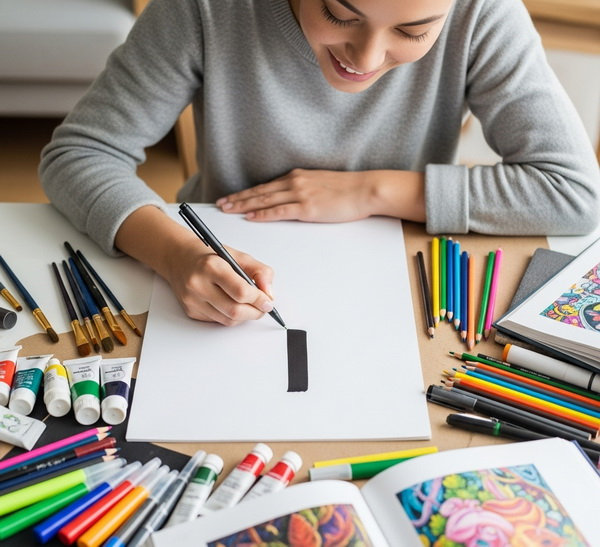
Why Color-Based Art Projects Are Perfect for Beginners
If the thought of drawing from scratch makes you break out in a cold sweat, you’re in the right place. Color-based art projects remove the pressure of sketching figures, mastering perspective, or creating flawless outlines. Instead, the focus is on color, shape, and form – things anyone can explore, even on their very first try.
One of the biggest perks? Instant visual gratification. You don’t have to wait hours or days to see your progress. Filling in a section of a color-by-number or completing a block of pixel art gives you immediate results. Each small, colorful step feels satisfying and builds momentum, keeping your motivation alive.
These projects also serve as a low-pressure creative outlet. There’s no «wrong» way to fill in a space, no need to compare yourself to professional artists, and absolutely no expectation to create a museum-worthy piece. It’s all about relaxing, experimenting, and enjoying the process.
They’re also accessible and affordable. You can start with a box of crayons, a handful of markers, or even a free coloring app on your phone. No fancy equipment, no expensive workshops – just you, some colors, and your curiosity.
And here’s the best part: working with color isn’t just a one-off hobby. It’s a foundation for more. Without even realizing it, you’ll be learning about color theory, visual balance, and composition – skills you can carry into painting, digital design, or any other art form you decide to explore later.
Tip #1: Start with Color-by-Number and Pixel Art for Easy Wins
Think of color-by-number and pixel art as the training wheels of the art world. Just like training wheels help new cyclists find their balance without the fear of falling, these creative activities give you all the structure you need – so you can focus on enjoying the ride.
How They Work:
- Color-by-Number: You get a pre-drawn outline divided into numbered sections, each number linked to a specific color. Your only task is to fill in the spaces with the matching colors.
- Pixel Art: You work on a grid where each square (or «pixel») is filled with a specific color. As you fill in more pixels, a complete image emerges – like a puzzle revealing itself. This can be done digitally or on paper.
Why They’re Perfect for Beginners:
- No blank page fear. You don’t have to start from scratch. The outline or grid is already there, so you can dive straight into adding color.
- Learn without realizing it. While you’re filling in spaces, you’re also picking up the basics of color theory and composition. Predefined palettes teach you how colors work together, and finished images show you visual balance in action.
- Quick wins, big motivation. Completing even a small section gives you an instant boost of satisfaction. That «I did it!» feeling makes you want to keep going.
Where to Start:
- Physical kits: Try classic coloring books, adult paint-by-number sets, or diamond painting kits.
- Digital apps: Explore beginner-friendly apps like Happy Color, Pixel Studio, or Colorfy on your phone or tablet.
- Websites: Visit free coloring sites that let you color interactively, or download printable pages for offline fun.
Your Turn! Ready to give it a try? 🎨 Start with one small project today and see how quickly your confidence grows. We’ve got a growing collection of free printable pixel color-by-number pages right here on our site – perfect for your first creative win!
Tip #2: Master Your Palette with Limited Color Schemes
A limited color palette simply means working with a small, curated set of colors – usually between two and four – instead of the full rainbow. Think of it as editing your wardrobe: fewer pieces, but each one works perfectly with the others. Compare that to opening a giant box of crayons or a complete set of paints – sometimes, too many choices can feel overwhelming.
Why It’s Perfect for Beginners:
- Reduces decision paralysis. Fewer choices mean less time second-guessing. You can focus on creating instead of endlessly debating which shade of green to use.
- Guarantees harmony. If you pick colors that naturally work well together, your final piece will look cohesive and intentional – even if you’ve never studied color theory.
Three Easy Types of Limited Palettes:
- Monochromatic: variations of a single color, like light blue, medium blue, and deep navy. The result feels calm, sophisticated, and elegant.
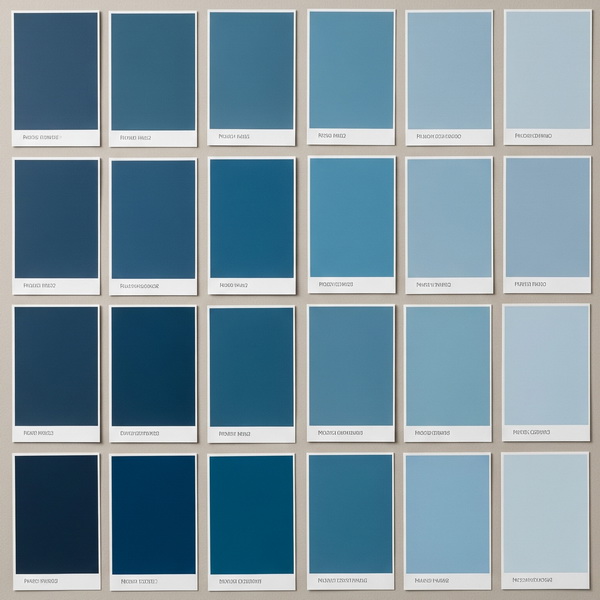
- Analogous: colors next to each other on the color wheel, such as green, blue-green, and blue. Naturally harmonious and pleasing to the eye.
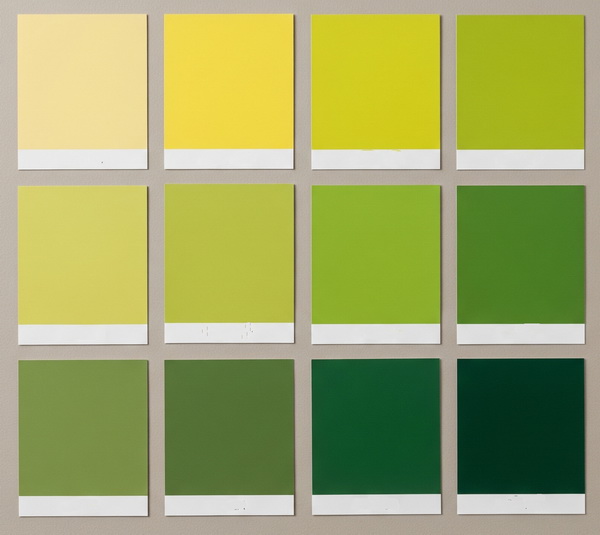
- Complementary: two colors directly opposite on the color wheel, like blue and orange. This creates striking contrast and visual energy, making your artwork «pop».
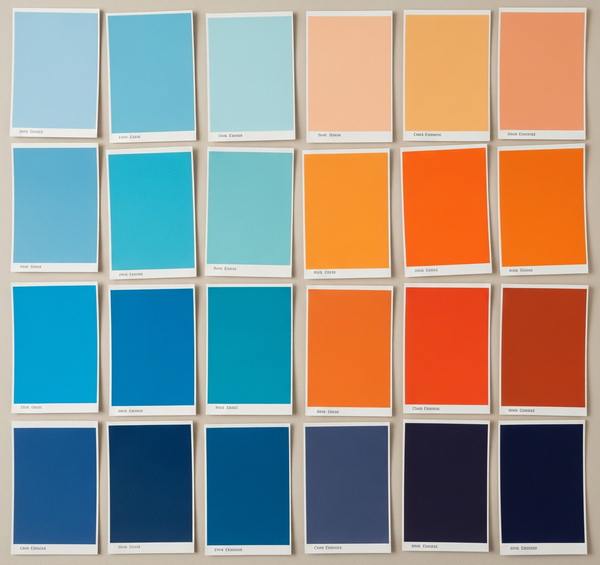
Where to Find Palette Inspiration:
- Nature: Look at a sunset’s pinks and purples, a forest’s greens and browns, or the sandy beiges of a beach.
- Photography: Save images you love and sample their colors.
- Online tools: Use resources like Adobe Color, Coolors, or Pinterest boards to generate ready-to-use palettes. Think of them as your personal color assistants.
Tip #3: Embrace Imperfection and Play (No Such Thing as a Mistake!)
Ever feel like every mark you make has to be perfect? Or that if you «mess up,» the whole piece is ruined?
Perfectionism is the enemy of creativity – and it’s one of the biggest reasons beginners never get started. The pressure to get it «right» can freeze your hand before you’ve even chosen a color.
Here’s the secret: the goal isn’t to create a flawless masterpiece – it’s to have fun, explore, and enjoy the act of making something. Think of it like playing in a sandbox: you build, you experiment, and if a wave comes along and washes it away, that’s just part of the experience.
When you focus on the process rather than the product, everything changes. Coloring, painting, or filling in pixels becomes a form of relaxation – a way to slow down, clear your mind, and immerse yourself in a moment of creativity. The finished piece? That’s just a bonus.
And remember: in this kind of art, there’s no such thing as a mistake. That «wrong» color choice might add unexpected depth. That uneven line could give your work a unique, handmade charm. These happy accidents are where some of the most interesting ideas are born.
Tip #4: Best Art Tools for Beginners: From Crayons to Digital Brushes
Walk into any art store – or scroll through an online supply shop – and the sheer variety of tools can be overwhelming. Pencils, paints, markers, digital apps… where do you even start? The truth is, there’s no «right» tool for everyone – only the one that feels right for you. This quick guide will help you explore a few popular options so you can find a medium that matches your style, personality, and goals.
| Tool | Feel & Best Use | Beginner Advantages | Test Run Idea |
|---|---|---|---|
| Colored Pencils | Precise and controlled, perfect for detailed work. You can layer colors to create depth, shading, and new tones. | Affordable, easy to fix mistakes with an eraser, and portable enough to take anywhere. No drying time or mess. | Try a simple shading exercise. Take one color and experiment with light, medium, and heavy pressure to see how many shades you can make. |
| Markers | Bold, vibrant, and great for filling large areas quickly. They deliver strong, solid color with each stroke. | Highly saturated, no mixing required, and deeply satisfying to use. Perfect for pop-art or comic-style designs. | Pick three bright colors and create a simple geometric pattern. Focus on staying within the lines and see how the colors interact. |
| Watercolor Paints | Soft, transparent, and fluid, with a dreamy, flowing quality. | A little paint goes a long way, and watching colors blend naturally on the page can be calming and meditative. | Try a «wet-on-wet» experiment – brush water onto the paper, then drop in different colors and watch them mix and spread on their own. |
| Digital Brushes (Tablets & Computers) | Infinitely versatile – switch colors, brushes, and textures in seconds without any mess. | Unlimited color options, instant undo/redo, and no need to buy physical supplies. Great for tech-friendly creatives. | Open a simple digital coloring app and use just one brush tool. Play with placing different colors side-by-side and try the undo button to see how forgiving it is. |
Tip #5: Create Your Own Color System (and Why It’s Simpler Than You Think)
Here’s a little secret: professional artists and designers rarely choose colors completely at random. Instead, they keep a color system – a personal library of favorite colors and combinations they know work well together.
The good news? Creating your own is easy, and it’s one of the most satisfying steps you can take toward making your art feel more intentional.
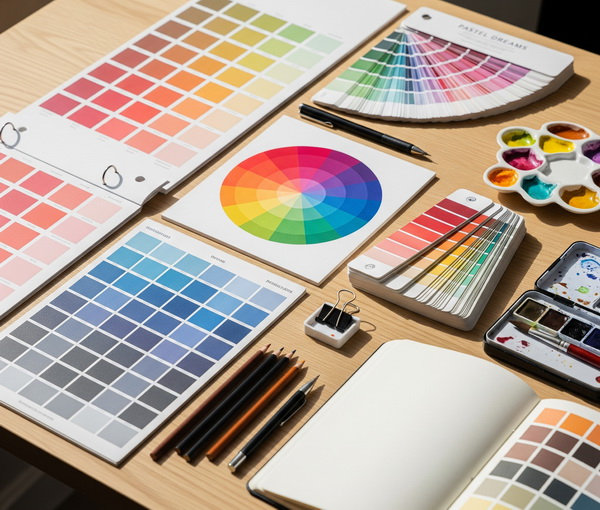
How It Works:
- Physical swatches: grab a small notebook or a stack of index cards. Any time you discover a color you love – whether it’s in a magazine, a fabric pattern, or a new marker – add a swatch to your collection. Over time, you’ll build a personal «color treasure chest» that you can flip through whenever you need inspiration.
- Digital reference cards: if you’re working on a computer or tablet, save your favorite colors inside your art software. Record HEX codes or create mini digital palettes you can reuse for future projects. Many free tools make this easy, and you’ll always have your signature colors at your fingertips.
Why It’s Worth It for Beginners:
- Removes guesswork. No more staring at your supplies wondering which colors to pick. Your go-to palette means you can start creating immediately.
- Builds visual consistency. Using a consistent set of colors naturally develops your style and helps your pieces feel like part of a cohesive collection.
Want to take this further? Check out our page “Color Names and Codes” to choose the right shades for your coloring projects.
Bonus Tip: Go Beyond the Page with Journaling and Scrapbooking
Art doesn’t have to stay confined to a single sheet of paper or a finished canvas. The color-based techniques you’ve learned so far can easily spill over into other hobbies, adding a creative spark to your everyday life. Two of the easiest – and most rewarding – places to start are journaling and scrapbooking.
For Journaling
Think of your journal as more than just words on a page. Use color to capture your daily mood, highlight key thoughts, or frame your entries with decorative borders.
If your day felt peaceful, try filling a section with calming blues and greens.
If it was full of energy, go bold with bright yellows and oranges.
Over time, you’ll create a visual diary that tells your story not only through words but through color.
For Scrapbooking
Color can transform a scrapbook page from a random collection of items into a cohesive, themed design. Pick a consistent palette for each spread to tie your photos and mementos together.
For example, use pastel pinks and purples for a baby shower page to create a soft, dreamy feel, or bright reds and greens for holiday memories that instantly feel festive.
Why This Matters
- Turns hobbies into habits: by weaving color into daily routines like journaling, you’ll keep your creative momentum going without needing to set aside special «art time.»
- Enriches daily life: adding a splash of color here and there makes ordinary moments more joyful and expressive.
By combining your color art with journaling or scrapbooking, you’re not just making pictures – you’re telling stories. It’s a simple, meaningful way to bring more color and creativity into your life, one day at a time.
Conclusion: Your Creative Journey Starts Now
You’ve got the tools to begin. You’ve learned that you don’t need to know how to draw – you just need to play with color. From starting small with color-by-number and pixel art, to mastering simple palettes, embracing imperfection, exploring different tools, and even creating your own color system, you now have a roadmap for overcoming the fear of the blank page.
Here’s the truth: anyone can be an artist. Creativity isn’t about having some rare, inborn talent – it’s about being willing to try, to play, and to enjoy the process. You have full permission to let go of expectations and simply create for the joy of it.
So don’t wait for the «perfect» time or the «right» supplies. Grab a pencil, a few colors, and start creating today!
Which technique will you try first? Post your plan or your first creation on social media with the hashtag #sergewhitehillart – let’s inspire each other!
And if you’re ready to keep going: Download Free Beginner-Friendly Color-by-Number Printables.
